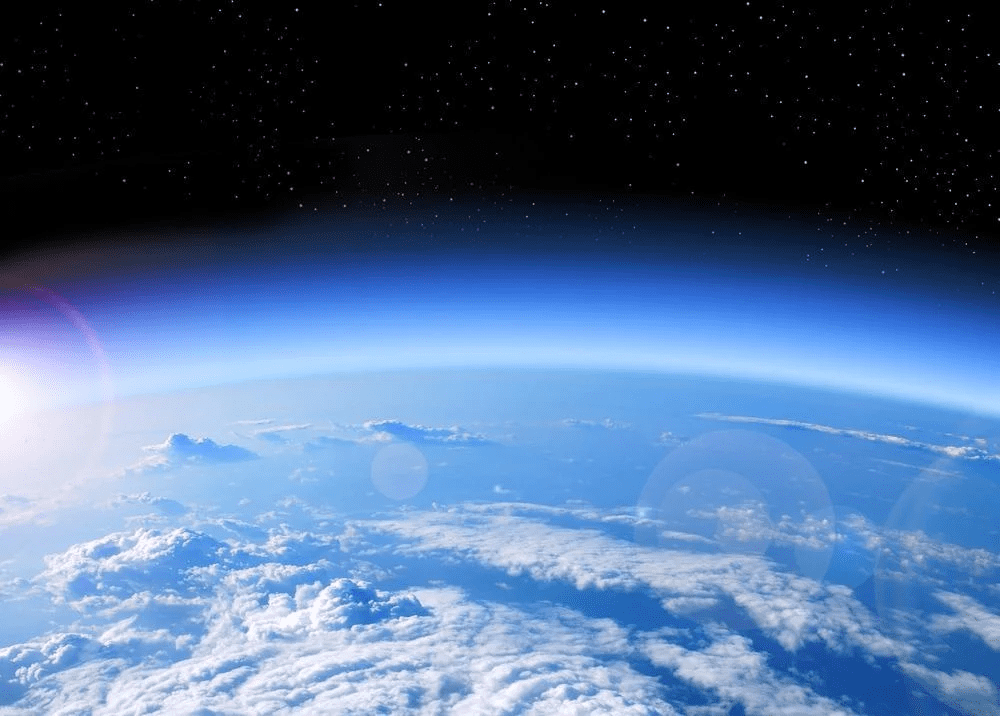An all-season ozone hole about seven times larger than the Antarctic ozone hole has been identified by a Canadian researcher in the Earth’s atmosphere, over almost the entire tropical region. The finding, while interesting and concerning, is being questioned by other ozone experts, who have argued the study has several flaws.

The ozone layer is a natural layer of gas in the stratosphere – the second layer of the Earth’s atmosphere. It’s crucial for life on Earth, as it protects us humans and other living things from ultraviolet radiation from the sun. Concentrations of ozone vary depending on temperature, latitude, altitude, and events such as volcanic eruptions.
Back in the 1970s, research suggested the ozone layer could be depleted because of industrial chemicals, mainly chlorofluorocarbons (CFCs), substances used in some aerosol sprays, blowing agents for foams, and refrigerants. This was then confirmed by the discovery of an Antarctic ozone hole in 1985 – an area of damage to the ozone layer. While popularly called holes, the damage is more like a really thin patch.
The ozone ‘hole’ motivated governments to act quickly. Reacting to the news, countries around the world adopted back the Montreal Protocol in 1987 to phase out ozone-depleting substances, including CFCs. This led to a dramatic improvement of the situation, and around 99% of the substances have been phased out and the layer is being replenished, with estimations that the Antarctic hole would close by the 2060s.
However, it’s not the only hole we should be worried about, according to professor Qing-Bin Lu, a scientist from the University of Waterloo in Ontario, Canada. Qing-Bin claims to have found a huge ozone hole that has been present in all seasons since the 1980s – unlike the Antarctic ozone hole, which only appears in the spring season.
“The tropics constitute half the planet’s surface area and are home to about half the world’s population. The existence of the tropical ozone hole may cause a great global concern,“ Qing-Bin said in a statement. “The discovery calls for further studies of ozone depletion, UV radiation change, increased cancer risks, and other effects.”
Another ozone hole?
The discovery of the whole-year ozone hole over the tropics was surprising to the scientific community, as it wasn’t predicted by conventional photochemical models. The study builds on previous work by Qing-Bin and colleagues on an ozone depletion theory, according to which cosmic rays from space reduce ozone in the atmosphere.
But not everyone is convinced. In fact, some people had some strong words about the study.
Paul Young, a researcher at Lancaster University and a lead author of the latest scientific assessment of ozone depletion, not involved with the study, dismissed the existence of a tropical ozone hole. Young said Qing-Bin looked at percentage changes in ozone rather than absolute changes, with the latter being more relevant for UV reaching the surface.
“There is no ‘tropical ozone hole’, driven by the author’s proposed electrons from cosmic rays or otherwise. The long term changes and year-to-year variability of the ozone layer in the tropical lower stratosphere (~15-20 km up) are well understood to be the result of both human-driven processes and natural drivers,” Young was quoted by Science Media Centre.
“The author’s identification of a ‘tropical ozone hole’ is down to him looking at percentage changes in ozone, rather than absolute changes, with the latter being much more relevant for damaging UV reaching the surface. Interestingly, his article also does not draw from the vast literature that explores and documents ozone trends in all regions of the atmosphere.”
Meanwhile, Marta Abalos Alvarez, a researcher at the Complutense University of Madrid (UCM), also not involved in the study, said it lacked the necessary scientific rigour to be considered a reliable contribution. Alvarez said the study has “serious errors and unsubstantiated assertions” that contradict previous results and that the journal had a low impact factor.
Martyn Chipperfield, Professor of Atmospheric Chemistry at the University of Leeds, agreed and said to be surprised that the study was published as it is. Chipperfield said not to be convinced that the results are correct.
“I am surprised that this study was published at all in its current form. The results of this work will be highly controversial and I’m not convinced they are correct. [..]Science should never depend on just one study and this new work needs careful verification before it can be accepted as fact,” he added.
Ultimately, the study was published, and the controversy is likely just beginning. As Chipperfield says, science is never simply in one study, and no doubt, we’ll be hearing more from this debate. This scientific disagreement and debate is what pushes science forward and what helps it stay accurate and precise.
The study was published in the journal AIP Advances.


